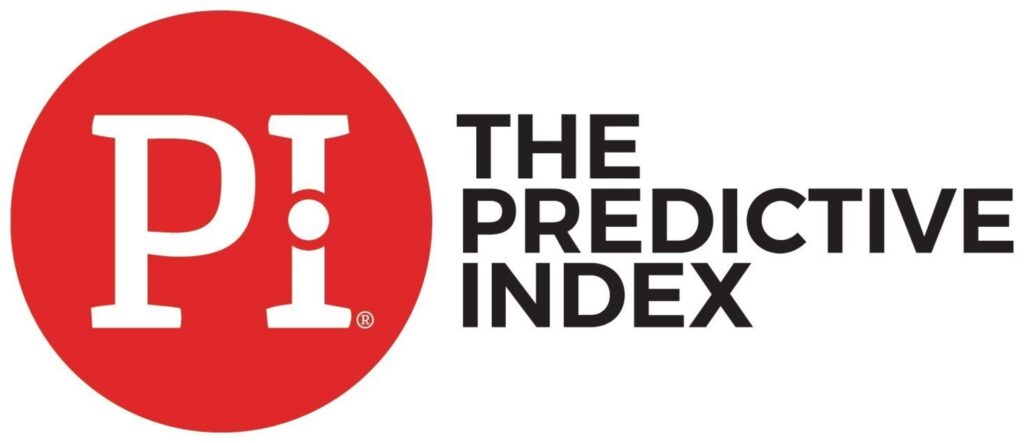Staying compliant with EEOC regulations is not just a legal necessity but a cornerstone of ethical hiring practices. In this blog, we will explore how you can effectively integrate the Predictive Index while maintaining compliance with EEOC regulations and fostering a culture of equity.

Organizations are increasingly turning to tools like the Predictive Index (PI) to make smarter hiring decisions. A common concern is how to ensure these tools are used in ways that align with EEOC guidelines. Misusing assessments can result in unintentional bias or discrimination, undermining the fairness and integrity of your hiring processes.
In this blog, we will explore how employers can effectively integrate the Predictive Index while maintaining compliance with EEOC regulations and fostering a culture of equity.
- What happens when a candidate shows misalignment with an assessment benchmark?
- When does a consultant share that data with the client, and how does a hiring manager use it internally?
- The rule of curiosity
- What happens to the candidate during the process?
What Is the EEOC?
The EEOC is responsible for enforcing federal laws that prohibit discrimination in the workplace. These laws make it illegal to discriminate against candidates based on race, color, religion, sex (including pregnancy, sexual orientation, or gender identity), national origin, age (40 or older), disability, or genetic information. Importantly, these laws apply to all stages of employment, from recruitment and hiring to promotions and layoffs.
What Happens if You Breach the EEOC?

When a company or individual breaches the Equal Employment Opportunity Commission (EEOC) regulations, they can face significant legal and financial repercussions. In 2022 alone, the EEOC secured over $513 million for victims of workplace discrimination, illustrating the hefty settlements and fines that can result from non-compliance.
When a company violates EEOC regulations, specifically in the hiring process, the consequences can be severe.Discriminatory hiring practices—whether intentional or based on factors such as race, gender, age, disability, or other protected characteristics can lead to significant legal and financial penalties. In 2022, the EEOC recovered over $51 million in monetary benefits for job applicants who experienced hiring discrimination.
Companies guilty of such breaches may be required to compensate affected candidates, adjust their hiring processes, and implement anti-discrimination training. Beyond financial consequences, a violation can damage the reputation of an organization, making it harder to attract top talent and retain a diverse, inclusive workforce. These incidents can create a lasting negative perception of their brand in the marketplace and industry.
The Predictive Index and Its Purpose in Hiring

The Predictive Index is a scientifically validated behavioral assessment tool to understand candidates’ workplace behaviors and cognitive abilities. It helps organizations match individuals with roles based on how well their natural behaviors align with the job requirements. This can aid in making more objective, data-driven decisions, leading to better job performance and increased employee retention.
However, while the PI is a powerful tool, it must be used correctly to ensure it does not violate EEOC guidelines. Misuse of behavioral or cognitive assessments can lead to adverse impact, where a seemingly neutral selection criterion disproportionately affects a protected group.
EEOC Guidelines and Employment Tests
The EEOC allows the use of employment tests, including behavioral assessments like PI, under two conditions:
- The test must be job-related and consistent with business necessity. This means the assessment should measure characteristics essential for successful job performance.
- The test must not create a disparate impact on a protected group unless it can be justified by business necessity. Disparate impact occurs when a hiring practice disproportionately excludes individuals from protected groups.
Understanding these principles is crucial when integrating the Predictive Index into your hiring process.
Here is how to ensure that PI assessments adhere to EEOC compliance:
Use Valid and Reliable Assessments

The first step in remaining EEOC compliant with the Predictive Index is to ensure the assessments you use are both valid and reliable. Validity refers to how well the assessment measures what it is supposed to measure—does it truly assess the traits that predict success in the role? Reliability refers to the consistency of the assessment over time—will the results be the same if the test is administered again?
The Predictive Index has been rigorously tested for validity and reliability. However, as an employer, you must also use the tool appropriately for the specific job. This means conducting a thorough job analysis to identify the critical traits necessary for success in the role. By linking PI results to job performance, you demonstrate the necessity of the assessment for the business.
Avoid Adverse Impact
Even if an assessment is job-related, it can still result in an adverse impact if it disproportionately affects members of a protected class. To minimize the risk of adverse impact, regularly monitor the results of your assessments. If you notice that certain groups consistently score lower on the Predictive Index, investigate whether the assessment is inadvertently favoring a particular demographic.
To stay compliant, conduct a statistical analysis to determine whether there is a disparate impact. If you find the assessment disadvantages a protected group, either modify the tool or demonstrate that the characteristic it measures is essential for the job and no less discriminatory alternatives are available.
Implement Objective, Consistent Processes

To avoid unconscious bias and ensure compliance, it is essential to apply the Predictive Index consistently across all candidates for a given role. This means developing standardized procedures for administering and interpreting the assessments. Every candidate should be evaluated using the same criteria and under the same conditions.
Objective and consistent processes reduce the chance of discriminatory practices. They also ensure hiring decisions are based on data rather than gut feeling or personal biases. Documenting your processes and decisions is another layer of protection, demonstrating that the assessment is applied fairly and uniformly.
Provide Reasonable Accommodations
Under the Americans with Disabilities Act (ADA), which the EEOC enforces, employers are required to provide reasonable accommodations for candidates with disabilities. This might mean offering alternative formats of the assessment or additional time to complete it.
If a candidate requests an accommodation, you should engage in an interactive process to understand their needs and make the appropriate adjustments. Be sure to document any accommodations provided to ensure you maintain a clear record of compliance.
Train Hiring Managers and Recruiters
One of the most important ways to ensure EEOC compliance when using the Predictive Index is to provide training for hiring managers and recruiters. Everyone involved in the hiring process should understand how the PI works, how it should be interpreted, and how to avoid discrimination when making hiring decisions.
Training can also help address unconscious bias. Even though the Predictive Index is designed to provide objective data, human interpretation of that data can still be biased. Regular training on EEOC guidelines and fair hiring practices will help your team use the tool responsibly and make equitable hiring decisions.
Document Your Job-Related Justifications
When using the Predictive Index—or any hiring tool—it’s essential to document the rationale behind its use. Thisincludes outlining how the assessment relates to the job and how it supports business necessity. Proper documentation provides a record of your compliance efforts, which is invaluable if your hiring practices are ever questioned.
Maintaining detailed records also helps demonstrate that your organization is committed to fair hiring practices and is prepared to defend its use of assessments in line with EEOC regulations.
The Wrap-Up: Ensuring Fairness and Compliance with the Predictive Index

The Predictive Index can be a powerful tool for making objective, data-driven hiring decisions, but it must be used carefully and in accordance with EEOC guidelines. By ensuring that your assessments are valid, reliable, and job-related,and monitoring for adverse impact, you can integrate the PI into your hiring practices without risking non-compliance.Objective processes, reasonable accommodations, and thorough training for your team are critical steps to maintaining fairness and consistency.
Ultimately, the goal is to create an equitable hiring process that fosters both compliance and a culture of inclusion. Documenting your justifications and commitment to ethical practices protects your organization while attracting and retaining diverse talent. By following these steps, you can ensure that your use of the Predictive Index supports bothbusiness success and compliance with EEOC regulations.
By taking a thoughtful and deliberate approach, organizations can leverage the benefits of the Predictive Index without compromising fairness, ensuring they build strong teams that are as diverse and inclusive as they are high-performing.
At Titus Talent, we go beyond compliance with our Head, Heart, Briefcase philosophy. This holistic approach ensures that we not only consider behavioral and cognitive data from tools like the Predictive Index but also a candidate’s skills, cultural fit, and passion for their work. We are committed to putting the right person in the right seat by aligning their unique talents with your organization’s needs, all while maintaining the highest standards of fairness and compliance.
With our process, we guarantee quality talent that drives lasting impact. Let Titus Talent help you navigate the complexities of EEOC compliance and ensure you build diverse, high-performing teams that stand the test of time.
Let's Start a Conversation
TITUS INSIGHTS
Refreshing perspectives and practical expertise from the Titus team.
Committed To Radical Generosity
Our dedication to radical generosity keeps us focused on what matters most, and it allows us to make a trusted and lasting impact on the world around us. It’s the foundation of our culture and our partnerships.



